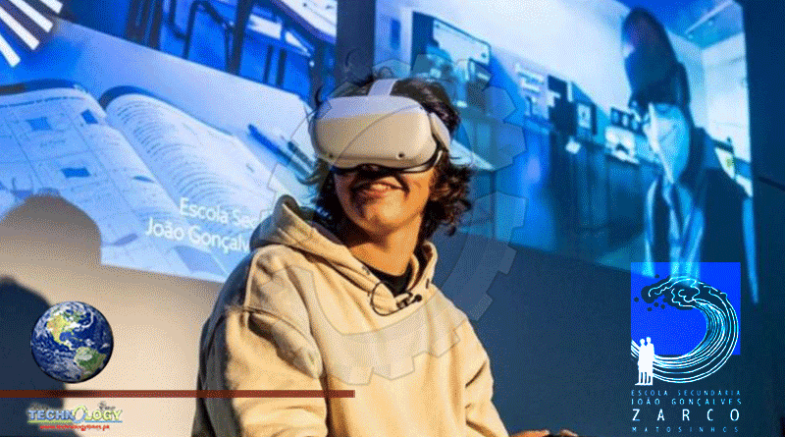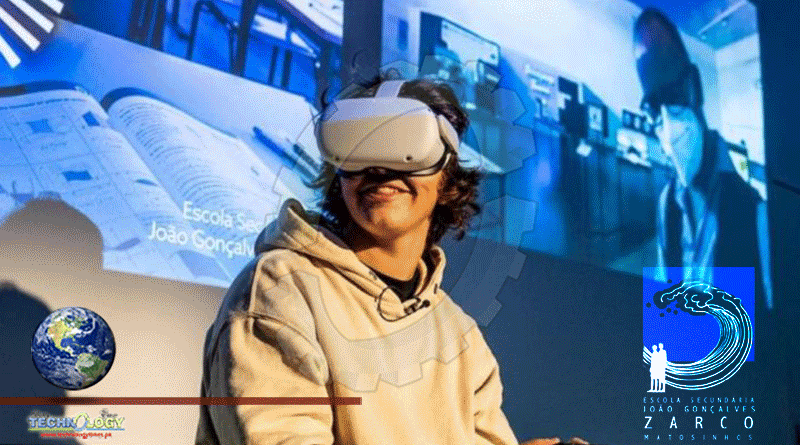João Gonçalves Zarco Secondary 5G School Has Been At The Forefront Of Tests And Has Helped To Reveal The True Potential Of 5G Technology

The João Gonçalves Zarco Secondary School in Matosinhos has been equipped with the most advanced mobile communications network taking full advantage of 5G technology—thanks to Ericsson’s role as technological partner to NOS. Ericsson, together with one of the biggest communications and entertainment groups in Portugal, NOS have signed a protocol with the 5G school in Matosinhos for the development of technological projects that allow the entire 5G school community to take full advantage of 5G.
Since 2019, Matosinhos has taken on the role of being a living innovation lab as part of a development of pilots in education linked to smart cities. The João Gonçalves Zarco Secondary 5G School has been at the forefront of tests and has helped to reveal the true potential of 5G technology, reiterating its technological preparation to lead the mobile technology of the future. As part of Ericsson’s new purpose and vision—to imagine the possibilities of limitless connectivity—education, and particularly taking experiential learning to the next level, is a core pillar. Through connecting learning establishments and learners, the use of digital technologies for lifelong learning will not only increase familiarity and confidence, it’ll also upskill users and enable new ways of learning for the future.
A 5G virtual reality solution
Education is one of the areas with the greatest potential to benefit from the disruptive transformation 5G will enable—through the development of innovative methodologies based on decentralized, networked learning, and new applications, such as extended reality. In a demo performed at the presentation event of the project, students from the 12th grade Science and Technology class used a virtual reality solution over the 5G network to make a virtual study visit to the science museum, Pavilhão do Conhecimento – Ciência Viva, in Lisbon, which is located more than 300 km south of the country’s eastern coastline. Using a robot equipped with a 360º camera—remotely controlled by the students—they created an immersive experience where they were able to interact with the exhibitions in the Pavilhão do Conhecimento in a very realistic way.
This classroom of the future is enabled by Ericsson Radio System’s most advanced 5G portfolio, with the Massive MIMO product AIR 3278 and high-capacity baseband 6648. The demo was implemented in a live network site using 100 MHz on a 3.6 GHz test frequency. Manuel Ramalho Eanes, Executive Director of NOS, says, “5G opens perspectives for changes never seen before in current teaching models, enhancing stimulating learning experiences and reducing geographic and social barriers. The collaboration with Escola Secundária João Gonçalves Zarco and Ericsson will allow us to work, from now on, in the actual application of this technology in the 5G school context, reinforcing NOS’ firm commitment to empowering present and future generations for the new paradigms of the digital society and the world of work.”
Sofia Vaz Pires, head of Ericsson Portugal, says: “Mobile networks will play a major role in connecting every learning establishment and learner. Ericsson is truly excited to join forces in this partnership with NOS to enable new ways of learning and teaching in João Gonçalves Zarco school. With our leading solutions and capabilities, together we will materialize some of the endless possibilities technology has for a quality, lifelong learning, where traditional barriers to access are eliminated thanks to 5G.”
This news was originally published at Ericsson
